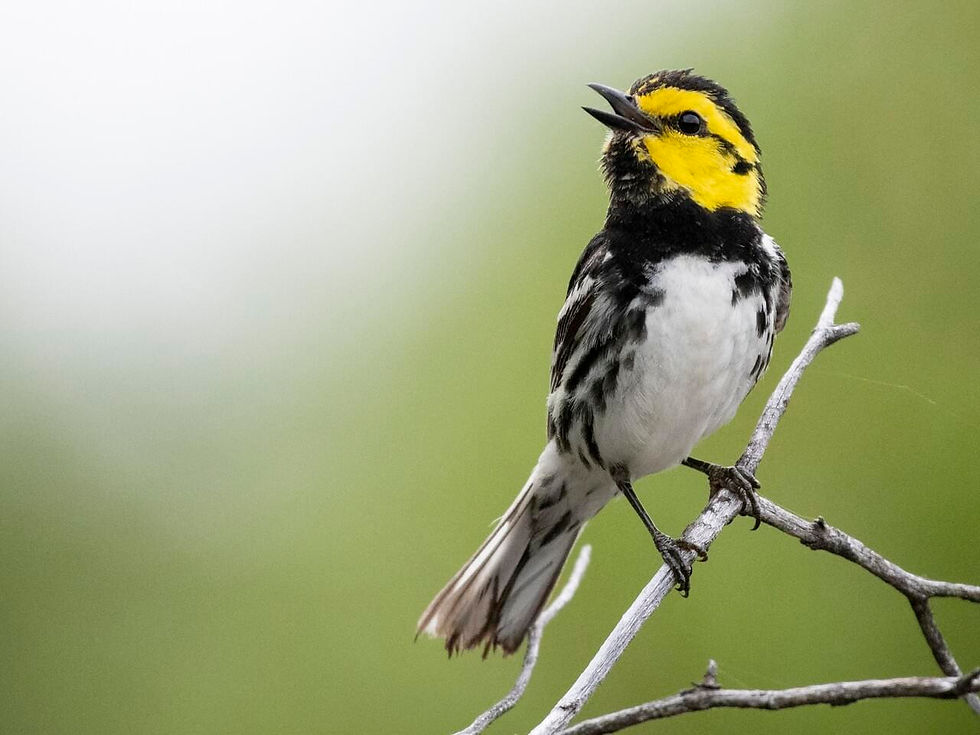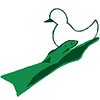
A Place To Dwell
The challenge with our Golden Cheeked Warbler was to design an all-embracing home environment for this bird, which would support: nesting, feeding, and it's particular lifestyle behaviors.
The Warbler belongs to the paruidae family or New World Warbler group, thus they are closely related to 47 other species across the Americas.
- By the late 1800s, English naturalist Henry Philemon Attwater was already raising an alarm about the rate at which this species’ habitat was being destroyed. It was listed under the Endangered Species Act in 1990.
- The eastern habitat area of this avian has been rapidly diminishing due to the possible new metropolitan area that could be San Antonio - Austin. The population brings sound, light pollution, and deforestation to the Warbler's habitat.
Roles - Design Researcher, Aviary Conservation Researcher, Environmental Researcher
Responsibilities - Design Lead
Time - 4 Weeks/ 1 Month
Industry - Conservation, Design, and ESG
Partners - Deason Innovation Gym
The Process
This project required a product design development and research focused process, I consistently researched and iterated with the key audiences at hand to collect data and produce informative and actionable products and services.
1
Species Research
2
Prototyping and Materials
3
Actionable Design
4
Experts in Conservation
5
Novices in Conservation
Species Research
The Golden Cheeked Warbler is the only endemic bird in the state of Texas, it lives and solely within the central Texas woodlands. Encompassed by Juniper and other hardwoods the Warbler has very specific, yet diminishing habitat due to deforestation, predators, and human pollutants which all lead to the endangered conservation status which the bird holds.

A map of Texas which shows all of the counties in which the Golden Cheeked Warbler resides

This map of North America shows in yellow the Central Texas area where the Golden Cheeked Warbler resides. The Blue area is the migration area of said bird.

The Golden Cheeked Warbler sits on a bare branch with a blurred natural green background

A map of Texas which shows all of the counties in which the Golden Cheeked Warbler resides
The warbler breeds, from May to July, exclusively in the Edwards Plateau of central Texas bordering Mexico, San Antonio, and reaching the western areas of Austin's juniper-oak woodlands. The Juniper, Cedar, and other colloquially known 'Hard Woods' are an ever diminishing tree species within Texas.
Golden Cheeked Warblers live in areas with a moderate to high density of older trees, and a tall dense foliage, with a varied canopy height of 25-30 feet. They will gravitate to native annual trees with dense brush surroundings, this is difficult to find as the birds nest in areas of habitat ranging in size from five to 20 acres per pair.
The combination of environmental, nesting, and other niche requirements of life, make conservation and preservation of this species difficult yet, all the more important for Texas' native wildlife. The Warbler while being a migratory bird nests and breeds exclusively within 33 counties of central Texas, an area 2/3 smaller than that of other birds in Texas.
Prototyping and Materials
Our project required research on the built environment, material studies, weather patterns, and various other customizations for the Parulidae's ideal home. This home development took part within the following three phases.
Habitat
Environment Niche
Ideation
Dimensions and Ideations
-
Nest Sizes and Locations
-
General Fomations
Avian Survival
-
Species Issues
-
Mood and Behaviors
Use of Environment:
-
Additional Sensors
-
Maintenance and safety
Environmental Conditions:
-
Nest Durability
-
Weather Fluctuations
Warbler Health:
-
Predators and Pests
-
Migration and Lifestyle
Potential Nesting
-
Additional Safety
-
Hiding Features
With this research completed, a 3D model and proof of concept was made to asses the product. Our nesting protection housing left us with safeguarding features which we knew that the warbler would not be prone to use given the following four features.
Conservation Experts

Active prevention and protection for the Golden Cheeked Warbler's nest, habitat, and more.
Un-trained Birdwatchers

Communication of warbler's base needs and the environmental standards required.
With a well developed sense of understanding of this bird's habitat and behaviors our next steps were to consider the common courses of actions which a person could take, both conservation experts and common bird watchers in the central Texas area.
Actionable Design
Warbler Watch

The twitchers must properly identify and quantify the birds (collaborate w/ Aubudon) within a radius of 5 acres per expedition. This will ensure population counts, longevity, and other tracking data.
Bird Calls/ Communications

Experts are directed to incrementally mark off areas within a 1 to 5 to 20 acre radius to warn visitors on their proximity to the warbler, while instructing them to leave the area the closer they are to the nest(s).
Wildland conservation

Active prevention and protection for the Golden Cheeked Warbler's nest, habitat, and more. Community gardens, juniper conservation, and advocacy for HOA regulations to include deciduous hardwood
Conservation Experts
The recommendation is a 3 step process to ensure a well preserved and undisturbed nest for the Golden Cheeked Warbler and its surrounding habitat in a safe, non-intrusive environment that benefits the bird.
Conservation Training

Joining organizations like the Balcones Canyonlands Conservation Plan (BCCP), Audubon Society, or even connecting with the local parks and wildlife organizations protects and conserves the wildlife.
Habitat Restoration

Being an ecology restoration expert is not necessary to aid in restoring natural spaces, there are tree identifiers, native plant resources, and guides by Texas areas, these tools will ensure a strong ecosystem.
Public Advocacy

When connecting to new people and environments, a new conservation activist should relate the need and urgency of the Golden Cheeked Warbler to build public awareness and develop a strong voice.
Un-trained Birdwatchers
The untrained nature of many watchers can possibly place the birds in danger if approached or bothered, this leads us to connect to external organizations and non-profits which are currently educating and holding trainings for new twitchers.









